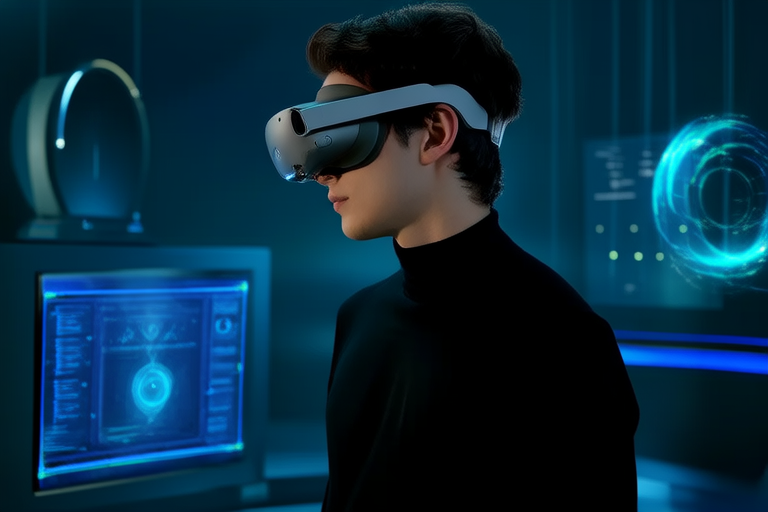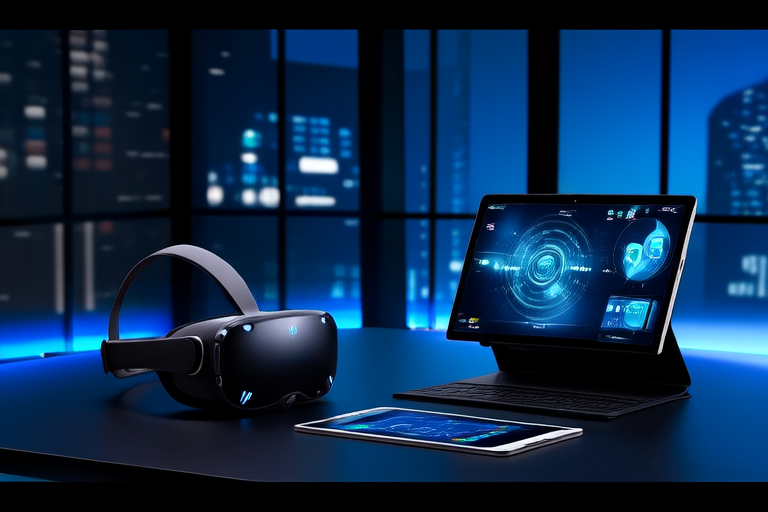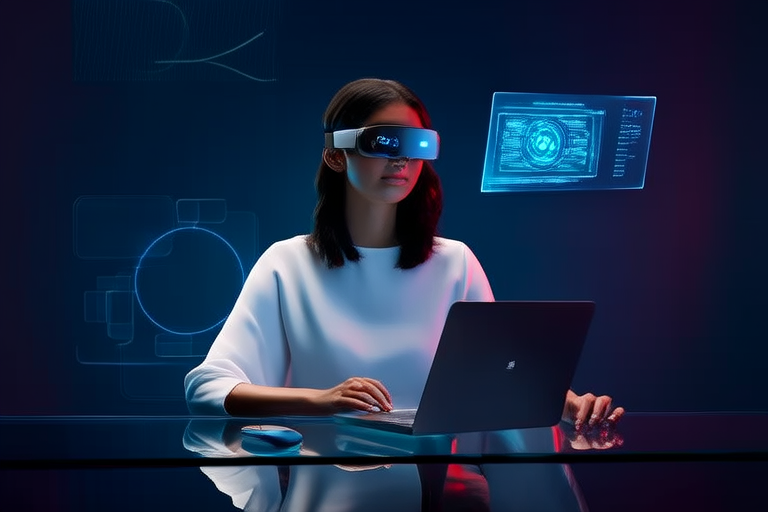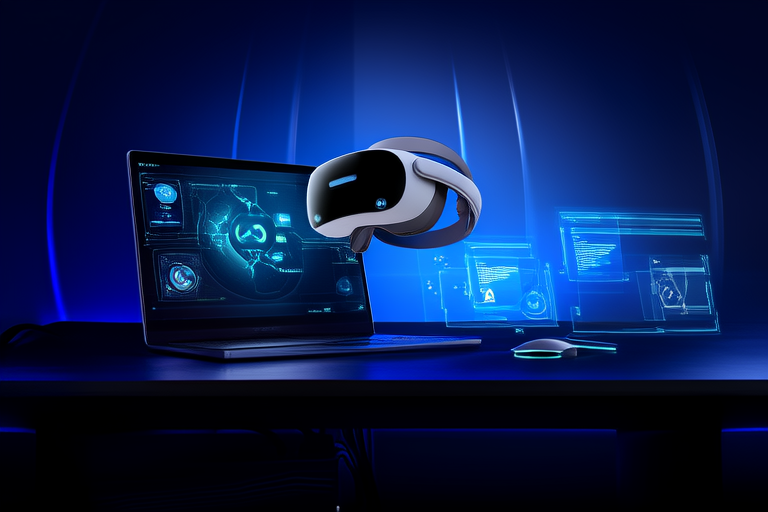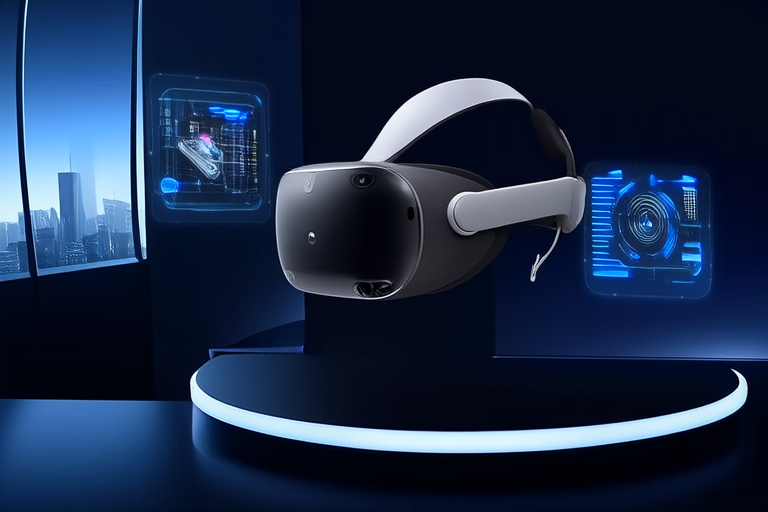Introduction
In recent years, immersive technologies such as virtual reality (VR) and augmented reality (AR) have emerged as transformative forces across industries. These technologies are reshaping how we interact with digital content, blurring the lines between the physical and virtual worlds. From gaming and entertainment to education, healthcare, and beyond, VR and AR are unlocking unprecedented opportunities for innovation. Their growing relevance is driven by advancements in hardware and software, coupled with increasing consumer demand for more engaging and interactive experiences. As these technologies continue to evolve, their potential to revolutionize industries and redefine human experiences becomes increasingly evident.
Understanding VR and AR
Virtual reality (VR) refers to a fully immersive digital environment that users can explore and interact with using specialized equipment, such as headsets and controllers. By simulating sight, sound, and sometimes even touch, VR creates an experience that feels convincingly real, transporting users to entirely new worlds. In contrast, augmented reality (AR) overlays digital elements onto the real world, enhancing the user’s perception of their surroundings through devices like smartphones, tablets, or AR glasses. While VR immerses users in a completely virtual space, AR enhances the real world by adding contextual information or interactive features.
The key difference lies in their approach: VR replaces reality, while AR augments it. This distinction allows each technology to serve unique purposes. For instance, VR excels in creating controlled environments for training or simulation, whereas AR is ideal for applications requiring real-time interaction with the physical world, such as navigation or retail experiences.
Applications Across Industries
VR and AR are already making significant strides in various sectors, transforming traditional practices and opening new avenues for growth.
In gaming, VR has redefined immersion by allowing players to step inside their favorite games, experiencing them from a first-person perspective. Titles like “Beat Saber” and “Half-Life: Alyx” showcase the potential of VR to deliver unparalleled levels of engagement. Meanwhile, AR has found its place in mobile gaming, with hits like “Pokémon GO” demonstrating how digital characters can seamlessly integrate into real-world environments.
Education is another field where these technologies are making waves. VR enables students to explore historical sites, conduct virtual science experiments, or even travel through the human body, providing hands-on learning experiences that were previously unimaginable. AR, on the other hand, enhances textbooks and classroom materials by overlaying 3D models and animations, making complex concepts easier to grasp.
In healthcare, VR is being used for surgical training, patient rehabilitation, and mental health therapy. For example, VR simulations allow surgeons to practice procedures in a risk-free environment, while AR-assisted surgeries provide real-time guidance by projecting vital information onto the surgeon’s field of view. Retailers are leveraging AR to enhance shopping experiences, enabling customers to virtually try on clothes or visualize furniture in their homes before making a purchase. Similarly, real estate agents use VR to offer virtual property tours, saving time and resources for both buyers and sellers.
Workforce training is yet another area benefiting from these technologies. VR provides realistic simulations for high-risk jobs, such as firefighting or aviation, ensuring trainees gain practical experience without endangering lives. AR, meanwhile, supports on-the-job training by overlaying instructions or diagrams directly onto equipment, improving efficiency and reducing errors.
Enhancing User Engagement
One of the most compelling aspects of VR and AR is their ability to create deeper levels of interaction and engagement compared to traditional media. Unlike passive forms of entertainment, such as watching TV or reading a book, VR and AR actively involve users in the experience. Sensory immersion plays a crucial role here, as these technologies engage multiple senses—sight, sound, and sometimes touch—to create a sense of presence. This heightened level of immersion fosters emotional connections and makes experiences more memorable.
Interactivity further amplifies engagement by empowering users to shape their environment or narrative. In VR, users can manipulate objects, navigate spaces, and make decisions that influence outcomes. AR takes this a step further by integrating digital elements into the real world, encouraging exploration and discovery. For instance, an AR app might guide users through a museum exhibit, revealing hidden details or additional context as they move from one artifact to another. Such dynamic interactions not only captivate users but also foster a sense of agency and ownership over the experience.
Challenges and Limitations
Despite their immense potential, VR and AR face several challenges that hinder widespread adoption. Technological limitations remain a significant barrier, particularly in terms of hardware performance and content quality. High-resolution displays, fast refresh rates, and low latency are essential for delivering seamless experiences, but achieving these standards often requires expensive equipment. Additionally, many VR headsets are bulky and uncomfortable for extended use, while AR glasses struggle with issues like limited field-of-view and battery life.
Cost is another major obstacle. High-end VR systems and AR devices can be prohibitively expensive for individual consumers and small businesses, limiting accessibility. Even when affordable options exist, the cost of developing high-quality content can deter creators from investing in these platforms.
Accessibility issues extend beyond financial constraints. Many VR and AR applications are not designed with inclusivity in mind, posing challenges for users with disabilities. For example, individuals with visual impairments may struggle to navigate AR interfaces, while those prone to motion sickness may find VR experiences uncomfortable.
Ethical concerns also loom large, particularly regarding data privacy. Both VR and AR rely heavily on collecting user data to personalize experiences, raising questions about how this information is stored, shared, and protected. Moreover, the immersive nature of these technologies raises ethical dilemmas about addiction, manipulation, and the blurring of reality versus fiction.
The Road Ahead
Looking to the future, emerging trends and technological advancements promise to address many of the current limitations of VR and AR. Innovations in hardware, such as lighter and more ergonomic designs, will improve comfort and usability. Advances in display technology, including higher resolutions and wider fields-of-view, will enhance visual fidelity and realism. Wireless connectivity and standalone devices will reduce reliance on external hardware, making these technologies more accessible and convenient.
On the software side, artificial intelligence (AI) and machine learning are expected to play pivotal roles in personalizing experiences and generating dynamic content. AI-driven avatars could enable more natural interactions in VR, while adaptive AR systems could tailor information to individual preferences in real time. Cloud computing will further democratize access by offloading processing demands to remote servers, enabling lower-cost devices to deliver premium experiences.
Predictions for the future include the convergence of VR and AR into a unified platform known as mixed reality (MR), which combines the best of both worlds. MR could enable seamless transitions between fully immersive VR environments and AR-enhanced real-world settings, offering unprecedented flexibility. Another exciting possibility is the integration of haptic feedback and brain-computer interfaces, which could unlock entirely new dimensions of sensory immersion.
As these breakthroughs materialize, VR and AR are poised to become integral parts of everyday life, transforming how we work, learn, shop, and entertain ourselves. From smart cities powered by AR infrastructure to virtual workplaces that transcend geographical boundaries, the possibilities are limitless.
Conclusion
Virtual reality and augmented reality represent a paradigm shift in how we interact with digital content, offering immersive experiences that transcend the limitations of traditional media. By bridging the gap between the physical and virtual worlds, these technologies are driving innovation across industries and reshaping human experiences. While challenges remain, ongoing advancements in hardware, software, and design are paving the way for a future where VR and AR are ubiquitous. As we stand on the cusp of this transformative era, it is clear that VR and AR will play a central role in shaping the next generation of digital experiences, unlocking untapped potential and redefining what is possible.
